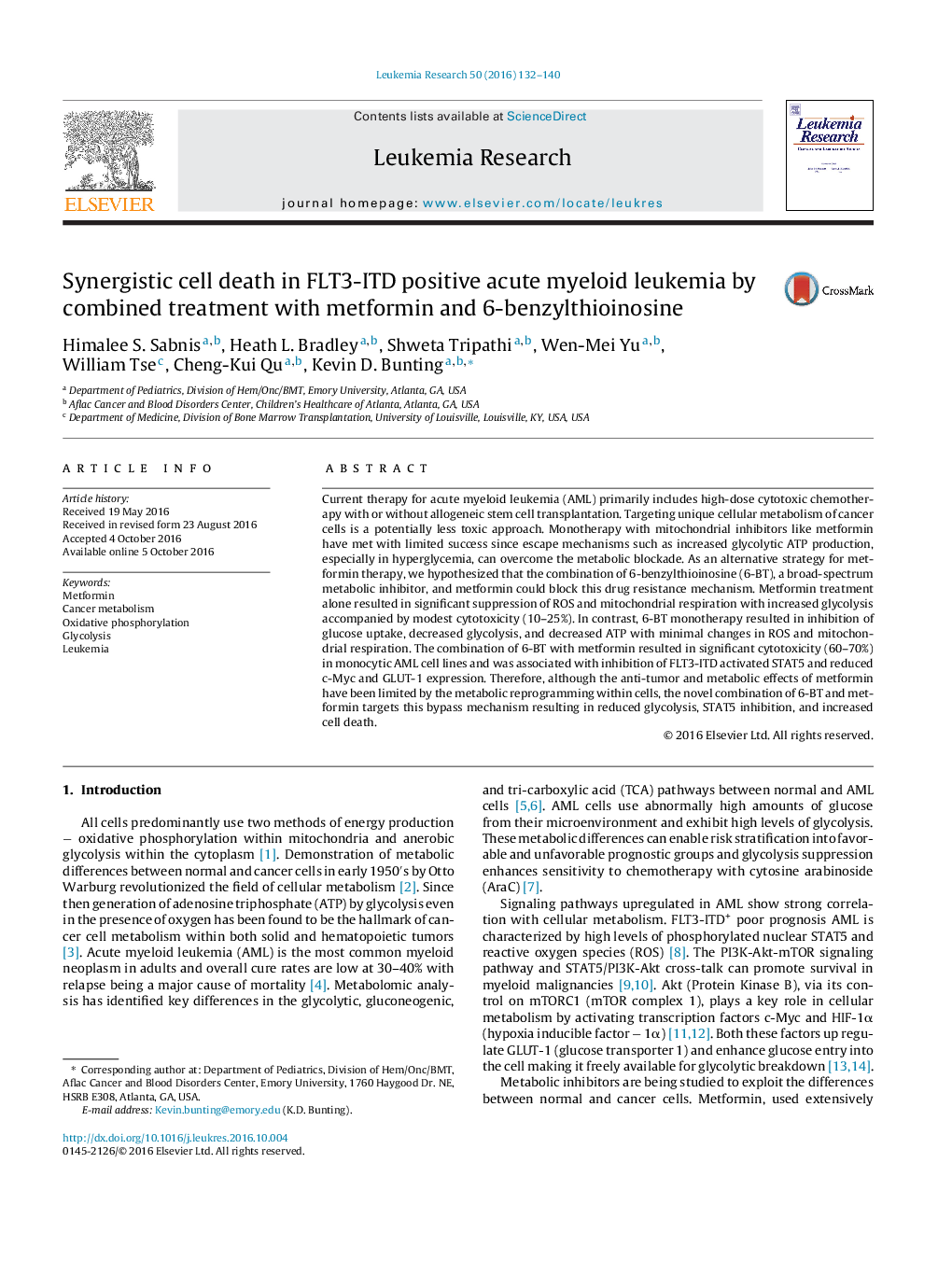| Article ID | Journal | Published Year | Pages | File Type |
|---|---|---|---|---|
| 5527862 | Leukemia Research | 2016 | 9 Pages |
â¢Metformin and 6-BT synergize to induce cytotoxicity in FLT3-ITD+ leukemia.â¢6-BT modulates c-Myc and GLUT-1 expression and inhibits glycolytic flux.â¢Combined block of oxidative and anaerobic metabolism promotes AML cell death.
Current therapy for acute myeloid leukemia (AML) primarily includes high-dose cytotoxic chemotherapy with or without allogeneic stem cell transplantation. Targeting unique cellular metabolism of cancer cells is a potentially less toxic approach. Monotherapy with mitochondrial inhibitors like metformin have met with limited success since escape mechanisms such as increased glycolytic ATP production, especially in hyperglycemia, can overcome the metabolic blockade. As an alternative strategy for metformin therapy, we hypothesized that the combination of 6-benzylthioinosine (6-BT), a broad-spectrum metabolic inhibitor, and metformin could block this drug resistance mechanism. Metformin treatment alone resulted in significant suppression of ROS and mitochondrial respiration with increased glycolysis accompanied by modest cytotoxicity (10-25%). In contrast, 6-BT monotherapy resulted in inhibition of glucose uptake, decreased glycolysis, and decreased ATP with minimal changes in ROS and mitochondrial respiration. The combination of 6-BT with metformin resulted in significant cytotoxicity (60-70%) in monocytic AML cell lines and was associated with inhibition of FLT3-ITD activated STAT5 and reduced c-Myc and GLUT-1 expression. Therefore, although the anti-tumor and metabolic effects of metformin have been limited by the metabolic reprogramming within cells, the novel combination of 6-BT and metformin targets this bypass mechanism resulting in reduced glycolysis, STAT5 inhibition, and increased cell death.
Graphical abstractDownload high-res image (133KB)Download full-size image
